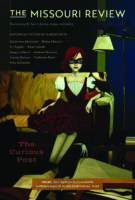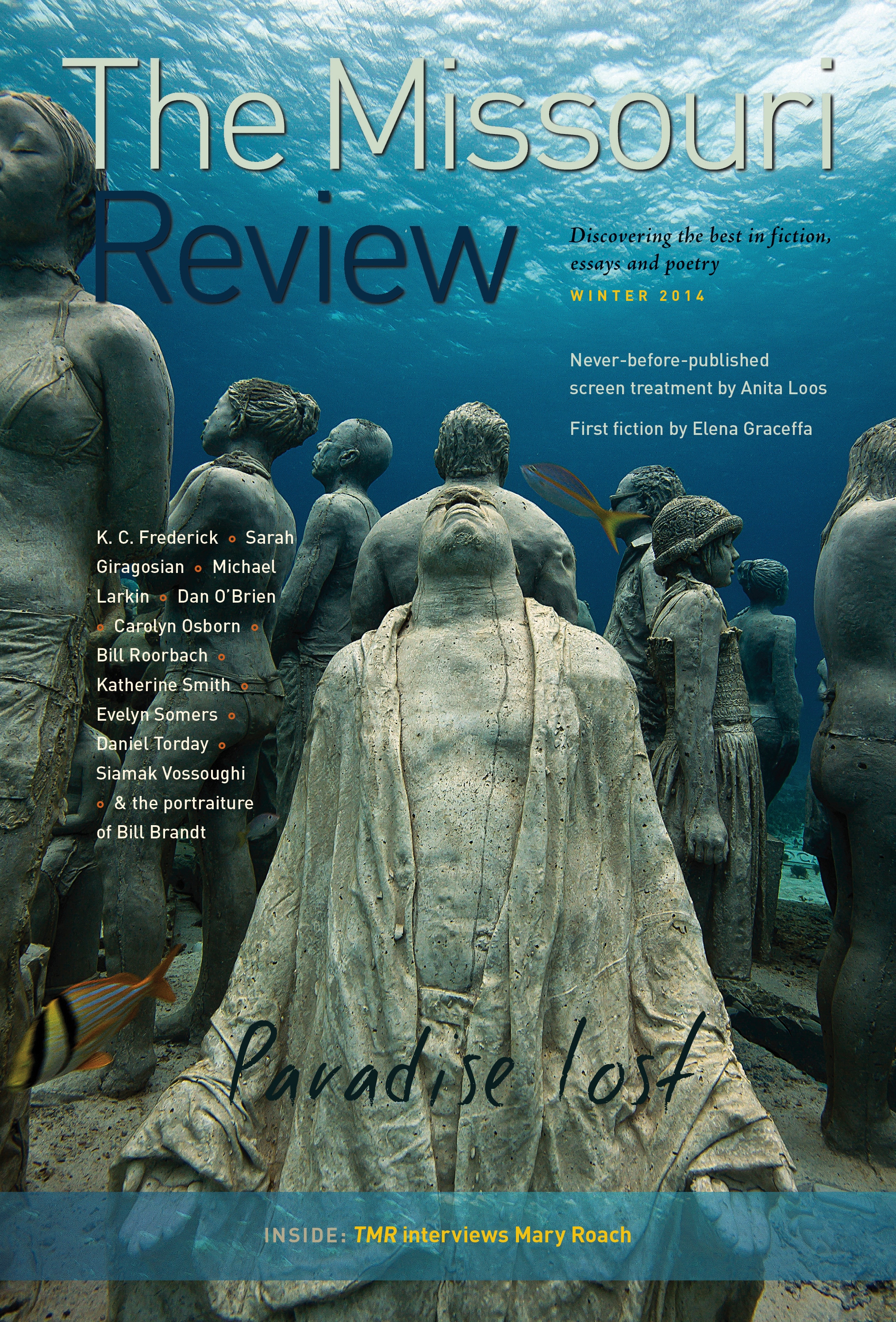Foreword | January 05, 2015
Paradise Lost
Speer Morgan
Literature is replete with “lost” places, from paradise itself to those places—islands or interludes of harmony—that are simply better than the present world. It may seem easy to make fun of Milton’s idea of how paradise is lost, with Eve initiating the fall in a world of unquestioned hierarchy and authority, yet it is Adam going along with her disobedience that seals their fate, begetting sin and death. In literature, the idea of paradise and its loss evolved from a religious Eden to one of nature. Romantic poets saw the experience of nature or moments in the natural world as both model and evidence of a deep human connectedness to higher powers. Wordsworth and Coleridge believed this sensitivity was especially present among children, who more easily than adults can experience “shards of time” in which they become transparent to the sublime power of nature and the imagination.
In the fully developed Industrial Revolution of England, writers such as Mathew Arnold, Alfred Lord Tennyson and John Ruskin brooded over our destruction of the natural world, “turning flower beds into heaps of coke.” American Transcendentalists had their own love affair with nature, but it fell away quickly among America’s early important fiction writers. Romantics Hawthorne and Melville, as well as many writers during the age of Realism, depicted the hoped-for paradises of pastoral life or faraway places as harboring as much or more evil than the everyday world.
Yet while paradise may be just a fantasy projection of some place or time or time of life, it is not mere foolishness because it expresses what makes human beings powerful—imagination, the ability to dream up something far better than what we have.
In her essay “Ranching on Dry Ground,” Carolyn Osborn writes about the challenges of raising cattle on her small inherited family ranch in Central Texas. They include learning how to pick healthy cattle, keeping the land free of invasive, water-sucking vegetation and getting windmills repaired when they break down. Osborne depicts such a deep sense of the history and personality of the land in her essay that it almost becomes a character whose ongoing life is threatened by long-term water shortages.
Daniel Torday’s “A Few Notes on Success” remembers life in the author’s twenties, when he yearned to succeed as a musician or writer but didn’t yet comprehend what he wanted or where he was going. When his bluegrass band is unexpectedly recruited to play in a Folgers coffee commercial, he gets a glimpse of the randomness of their selection and how insignificant they actually are—yet for more than one reason, the experience turns out to be strangely important in his life. It’s an engaging piece about the sort of unlikely things that happen in one’s twenties, when despite all the weirdness and uncertainty, anything is possible.
This issue’s fiction includes “People in Profile” by Siamak Vossoughi, told from the point of view of Mrs. Leavenworth, an elementary school teacher in San Francisco. She sets up a program that she calls “People in Profile,” in which the children play the roles of great humanitarians from history. They are interviewed about their lives and, in doing so, naturally become more peaceable and cooperative among each other. It’s a quietly marvelous little story suggesting the human power to learn about greatness by imitation.
In “The Grinning Boy” Michael Larkin imagines a possible inciting event leading to the gang war between members of the Charlestown and Somerville Irish mobs in the 1960s. The unnamed protagonist is the son of a working-class alcoholic father who supports Irish nationalism and gives to the Fenian cause. The boy, who is regularly beaten by a neighborhood bully, finds himself in the unexpected position to take unplanned revenge on both the bully and the whole Irish cause. What he does puts into motion snowballing violence that eventually, many years later, leads to seven years of gang bloodshed.
“Nikitin” by K. C. Frederick is another historically set piece, as well as a framed story, set in Paris in the late 1930s, with the threat of Hitler looming in the background. The events being remembered occur among the expatriate Russian community of Berlin in the late 1920s, when a Russian singer begins performing in the local clubs and becomes an immediate sensation. The lyrics and, even more, the performance of his songs evoke a fervid sense of nostalgia among the community—to them he’s “the voice of all lost Russia.” What is eventually discovered about the singer, however, leads to anger and bereavement within the community, evocative of the lost sense of home and national identity of all emigrants.
“Princesa,” a wonderfully comic story by Bill Roorbach, is set in the temporary paradise of a fancy hotel on the Mediterranean island of Ibiza, where a middle-aged widower, Robert, and his gay friend Phillipe go for a vacation. A beautiful and famous young Spanish actress arrives at their hotel, and Robert is love struck. During a swimming competition, she takes an unexpected interest in him and indulges in a flirtation that eventually has a devastating effect on him. Elena Graceffa’s “Ms. Greer” is another story about lost or unworkable romance. Two inspiring high school teachers, Meg and Kyle, have an affair despite the fact that they don’t really have that much in common. Their romance, like their lives as teachers, is like a Buddhist parable of transience, as for a brief but not insignificant time someone can be the most important person in the world to another—but then one move on.
This issue’s selection of poems by Sarah Giragosian merges human experience with that of other sentient beings—human lovemaking with snail mating, a baby’s birth with a spiderling’s release into the air, a person’s gazing with a cat’s dreaming. With a reimagined vocabulary, her poems retrieve the mysterious places where humans and other creatures are intimately connected and where personhood is porous rather than contained. Katherine Smith’s poems focus on the later years of the seventeenth-century Dutch painter Rembrandt, which were marked by personal tragedy and financial hardship. In these poems, the lost places are both physical and psychological— the loss of youth and promise, the death of the painter’s wife and three children and the eventual loss of a house that harbors memories of his work and family. In Dan O’Brien’s poems, war reporter Paul Watson takes us into a world of strife. Not only places but human lives, human livelihood and dignity are lost to wars and violence. These poems look with unflinching eyes at war-torn zones and the human suffering that are daily occurrences there.
Nobody writes more interestingly about the quite relevant but often avoided facts of life than Mary Roach. Her books concern such subjects as death, dead bodies and digestion. In her interview with Josh Huber and Johanna Saleska, Roach talks about how she discovers her subjects and the kinds of research involved in writing about science, as well as how to make a book accessible to a popular audience. She says, “I think people enjoy learning about science as long as it is not too much of a slog for them . . . I need to entice them with the surprising, weird facts that I throw in.”
This issue’s Found Text and Curio Cabinet both feature highly productive artists from the age of black and white. The Curio Cabinet gives us a taste of the photographs of Bill Brandt—noiresqe portraits of British luminaries such as Dylan Thomas and Robert Graves, the style of which suggests the private side of these public figures. Our Found Text is an unpublished early screen treatment by one of the pioneers of screen writing, Anita Loos. This treatment, “Wife Insurance,” eventually turned into a related but much different movie. It exemplifies the imaginativeness and fabular character of many of the early films. It also augurs the demimonde that Loos would write about in her most famous novel of twenty-some years later, Gentlemen Prefer Blondes. Loos was one of the women screen writers who wrote about half of all movie scripts before the 1920s. She exemplifies the tenaciousness and hard work of early Hollywood, before it fell under the curse of monumental production costs. A person with longtime friendships and amazing accomplishments, Anita Loos lived on for an astonishing sixty-year Hollywood career.
Speer Morgan
If you are a student, faculty member, or staff member at an institution whose library subscribes to Project Muse, you can read this piece and the full archives of the Missouri Review for free. Check this list to see if your library is a Project Muse subscriber.
Want to read more?
Subscribe TodaySEE THE ISSUE
SUGGESTED CONTENT

Features
Jan 08 2024
Foreword: Family Affairs
Family Affairs During the nineteenth century, observers from both sides of the Atlantic admired the relative looseness of American families while also criticizing a lack of multigenerational connectivity and… read more

Features
Dec 19 2023
Foreword: The Curious Past
The Curious Past The past is such a curious creature, To look her in the face A transport may reward us, Or a disgrace. – Emily Dickinson Jonathan Rosen’s… read more

Features
Jul 27 2023
Foreword: The New Realism
The New Realism I sometimes wonder what the dominant trend in literature is going to be called. Names for artistic periods and movements are hardly definitive, but they are useful… read more

